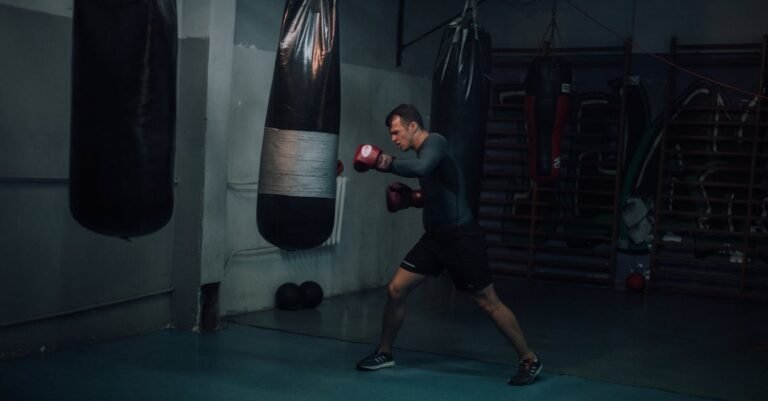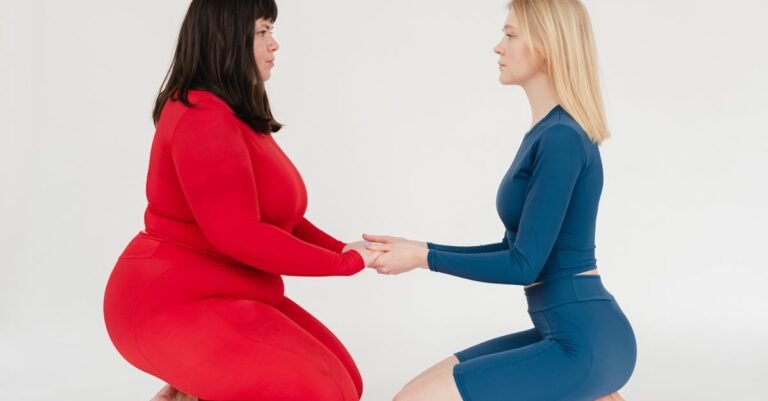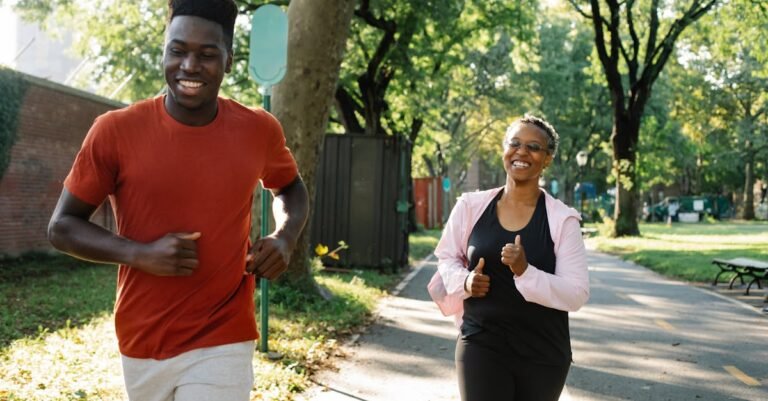Table Of Contents
- Partner Workout Ideas For Extra Motivation
- Why Bother Working Out with a Partner? The Power of Two!
- Getting Started: Finding Your Perfect Fitness Buddy
- Awesome Partner Workout Ideas (Let’s Get Sweaty!)
- Beyond the Gym: Creative Partner Fitness
- Keeping the Momentum Going: Long Term Success
- Conclusion: Your Fitness Journey, Better Together
- Frequently Asked Questions (FAQs)
- FAQ 1: What if my partner is much fitter than me?
- FAQ 2: We have very different schedules, how can we make partner workouts work?
- FAQ 3: What are some good warm up exercises for partner workouts?
- FAQ 4: Can we do partner workouts at home with minimal equipment?
- FAQ 5: How do we handle disagreements about workout routines?
Partner Workout Ideas For Extra Motivation
Let’s be honest, dragging yourself to the gym or out for a run can sometimes feel like climbing Mount Everest in flip flops. The couch calls, Netflix whispers sweet nothings, and suddenly, your fitness goals seem… well, far away. But what if you didn’t have to face the battle alone? What if you had a trusty sidekick, a partner in sweat, to share the journey? Partner workouts aren’t just a fitness trend; they’re a powerful tool to boost motivation, consistency, and frankly, make getting fit a whole lot more fun!
Think about it: having someone counting on you, cheering you on, and even providing a little friendly competition can be the secret sauce you need to stick with your routine. It transforms exercise from a solitary chore into a shared experience. Ready to ditch the solo struggle and double your fitness drive? Let’s dive into some awesome partner workout ideas and explore why teaming up might be the best fitness decision you ever make.
Why Bother Working Out with a Partner? The Power of Two!
Okay, so the idea sounds nice, but what are the real benefits? Why trade your solo sweat session for a duo dynamic? It turns out, the advantages are pretty compelling and go way beyond just having company.
Built In Accountability: No More Skipping!
This is perhaps the biggest superpower of partner workouts. Remember all those times you planned a morning workout, only to hit snooze repeatedly until it was too late? Yeah, me too. It’s so much easier to bail when you’re only letting yourself down. But knowing your friend, spouse, or workout buddy is waiting for you at the gym or the park at 6 AM? That’s a different story.
It’s like having a commitment contract, but instead of legalese, it’s built on mutual support (and maybe a little guilt if you stand them up!). You’re less likely to skip a session when someone else is counting on you to show up. This consistent presence is the bedrock of building a lasting fitness habit. No more phantom gym memberships!
Motivation Station: Pushing Each Other Forward
Some days, you just don’t feel it. Your energy is low, the weights feel heavier, and that last rep seems impossible. That’s where your partner shines. They can be your personal cheerleader, offering encouragement when you’re flagging (“You got this! Just one more!”) or providing that gentle push to go a little harder or faster than you might on your own.
A little friendly competition can also work wonders. Racing each other during sprints or seeing who can hold a plank longer can inject excitement and push your limits in a healthy way. It’s not about beating your partner into submission; it’s about using each other’s energy to elevate your own performance. They see your potential even when you’re doubting yourself.
Making Fitness Fun: Less Chore, More Cheer!
Let’s face it, sometimes exercise can feel monotonous. Staring at the same gym wall or pounding the same pavement route can get old fast. Bringing a partner into the mix instantly adds a social element. You can chat between sets, laugh at failed attempts (because they happen!), share workout playlists, and celebrate successes together.
Trying new exercises or fitness classes feels less intimidating with a friend by your side. It transforms workout time into quality time, strengthening your bond while you strengthen your bodies. It’s like turning exercise from a must do task into a get to do activity. Who knew squats could involve so much laughter?
Safety First: Having a Spotter and Support
Especially when lifting weights or trying challenging new moves, having a partner provides an invaluable safety net. They can spot you during heavy lifts like bench presses or squats, ensuring you maintain proper form and preventing potential injuries. They can offer physical assistance if needed or simply provide feedback on your technique.
Beyond physical safety, there’s emotional support too. Trying something new can be nerve wracking. Having a familiar face there can ease anxiety and make you feel more comfortable stepping outside your fitness comfort zone. They’ve literally got your back!
Getting Started: Finding Your Perfect Fitness Buddy
Alright, you’re sold on the idea. But how do you find this mythical workout partner? And more importantly, how do you make sure it’s a good fit? Finding the right partner is crucial for long term success.
Matching Goals and Fitness Levels
While you don’t need to be fitness twins, having generally aligned goals and similar (or adaptable) fitness levels helps immensely. If one person wants to train for a marathon and the other just wants to lift heavy weights twice a week, coordinating workouts might be tricky. Similarly, if there’s a vast difference in fitness levels, one person might feel held back while the other feels constantly pushed too hard.
Look for someone whose general aims overlap with yours – maybe you both want to lose weight, build strength, or just become more active. Some difference is fine and can even be motivating, but find common ground. Think compatibility, not carbon copy.
Communication is Key: Setting Expectations
Before you even lace up your sneakers together, have an open chat. What do you both want to get out of this partnership? How often do you want to work out? What types of activities do you enjoy (or despise)? What happens if one person needs to cancel?
Setting clear expectations from the start prevents misunderstandings and potential resentment down the line. Be honest about your commitment level, your preferences, and your pet peeves. Are you looking for a drill sergeant or a supportive friend? Knowing this upfront ensures you’re both on the same page and ready to support each other effectively.
Scheduling Savvy: Making Time Together
This is often the biggest hurdle. Life is busy! Finding mutually agreeable times to work out requires effort and compromise. Look at your schedules realistically. Are morning workouts feasible for both of you? Lunch breaks? Evenings? Weekends?
Treat your partner workouts like important appointments – put them in your calendars! Consistency is key, so try to establish a regular routine. Be prepared to be flexible, though. Life happens, and sometimes schedules need adjusting. The willingness to adapt is just as important as the initial plan.
Awesome Partner Workout Ideas (Let’s Get Sweaty!)
Okay, the groundwork is laid. You’ve found your buddy, you’ve chatted, you’ve scheduled. Now for the fun part – the actual workouts! The possibilities are endless, but here are some effective and engaging ideas to get you started, categorized for clarity.
Strength Training Together: More Than Just Lifting
Building strength doesn’t have to mean silently clanging weights in separate corners. You can actively work together.
Partner Squats (Bodyweight & Assisted)
Face your partner, hold hands or forearms, and squat down simultaneously, using each other for balance and support. This builds trust and ensures good form. For an added challenge, one partner can provide gentle resistance as the other stands up. Another variation involves one partner holding a wall sit while the other performs walking lunges or calf raises in front of them, then switching roles. It’s a great way to push each other through muscle fatigue.
Medicine Ball Mania (Passes, Twists, Slams)
Medicine balls are fantastic for partner work. Stand back to back and twist to pass the ball from one person to the other, working your obliques. Or, stand facing each other and do chest passes or overhead throws. For a real power move, try partner medicine ball slams: one person slams the ball down, the other catches the bounce and slams it back. It’s dynamic, engaging, and a great core workout.
Resistance Band Battles
Resistance bands offer versatile options. Stand facing each other, each holding one end of a band. One person performs rows, pulling the band towards them while the other provides stable resistance. Then switch. You can do this with bicep curls, triceps extensions, or even lateral walks where you stand side by side, band around your ankles, and step away from each other. It creates constant tension and requires cooperative effort.
Cardio Chaos: Getting Your Heart Rates Up
Cardio doesn’t have to be a solo slog on the treadmill. Make it interactive!
Partner Sprints & Interval Training
Head to a track, park, or even just a long stretch of pavement. Do interval sprints where one partner sprints while the other rests or performs an active recovery (like jogging or jumping jacks), then switch. You can also try “follow the leader” sprints, where one person sets the pace and direction, adding an element of unpredictability. Or set up cones for agility drills you can race through side by side.
Tandem Cycling or Running
While not strictly interactive in the same way, running or cycling side by side provides companionship and motivation. You can chat, set a pace together, and push each other during challenging hills or long distances. Matching strides or pedal strokes can create a sense of rhythm and shared effort. Consider exploring new routes together to keep things fresh.
Flexibility & Mind Body Connection
Fitness isn’t just about brute strength or endurance. Flexibility and balance are crucial, and partner work can enhance these aspects too.
Partner Stretching Routines
Assisted stretching allows you to get deeper into stretches than you might on your own. Your partner can provide gentle pressure to increase the stretch in hamstrings, quads, back, or shoulders. Communication is vital here – always tell your partner how the stretch feels and when to stop. It’s a great way to wind down after a tough workout and improve flexibility together.
Acro Yoga Basics (Trust & Balance)
Feeling adventurous? Acro yoga combines acrobatics, yoga, and therapeutics. It requires immense trust, communication, and balance between partners (a ‘base’ and a ‘flyer’). Start with very basic poses (like the ‘Bird’ pose) under qualified guidance if possible. Even simple counterbalances, where you lean against each other for support, build strength, trust, and body awareness. It’s challenging but incredibly rewarding.
Beyond the Gym: Creative Partner Fitness
Partner fitness doesn’t have to be confined to the four walls of a gym or traditional exercises. Think outside the box!
Hiking or Trail Running Adventures
Explore nature together! Choose a trail that suits both your fitness levels and enjoy the scenery while getting a great workout. Hiking provides steady state cardio and leg strengthening, while trail running adds an extra challenge with varied terrain. Sharing the experience of reaching a summit or discovering a beautiful view makes the effort even more worthwhile.
Dancing Your Way Fit
Sign up for a dance class together – salsa, swing, ballroom, whatever catches your fancy! Dancing is a fantastic cardiovascular workout that also improves coordination and balance. Learning steps together can be hilarious and fun, and it definitely beats staring at a treadmill counter. Plus, you gain a new skill you can show off!
Trying a New Sport Together (Tennis, Kayaking, etc.)
Pick up a racket and play tennis or badminton. Rent a tandem kayak or paddleboards. Try rock climbing at an indoor gym. Learning a new sport together is a fantastic way to stay active, challenge yourselves, and create shared memories. It keeps things exciting and prevents fitness from feeling like a repetitive task.
Keeping the Momentum Going: Long Term Success
Starting is one thing; sticking with it is another. How do you ensure your fitness partnership thrives long term?
Celebrating Milestones Together
Did you both consistently hit your workout goals for a month? Did one of you achieve a new personal best? Acknowledge and celebrate these wins! It doesn’t have to be extravagant – maybe a healthy meal out, a new piece of workout gear, or just verbal recognition and high fives. Celebrating progress reinforces positive habits and keeps motivation high.
Mixing It Up: Avoiding Workout Boredom
Doing the same routine week after week can lead to plateaus and boredom, even with a partner. Make a conscious effort to try new exercises, classes, or activities together. Explore different parks for runs, switch up your strength routine, or try one of the “beyond the gym” ideas mentioned earlier. Variety keeps things fresh, challenges your bodies in new ways, and prevents your workouts from feeling stale.
Handling Schedule Conflicts & Staying Flexible
Inevitably, life will get in the way sometimes. Someone will get sick, have a work emergency, or need to travel. The key is flexibility and communication. Have a backup plan. Maybe if you can’t meet for a full workout, you can do a quick virtual check in or agree to do your workouts separately and report back. Don’t let one missed session derail everything. Understand that adjustments are part of the process and support each other through scheduling hiccups.
Conclusion: Your Fitness Journey, Better Together
Embarking on a fitness journey with a partner transforms it from a potentially lonely grind into a shared adventure. You gain an accountability buddy, a motivator, a spotter, and someone to simply make the process more enjoyable. From shared squats and medicine ball passes to exploring trails and learning new sports, the possibilities for partner workouts are vast and varied.
Remember, the perfect partner workout isn’t just about the exercises themselves; it’s about the connection, communication, and mutual support. It’s about showing up for each other, pushing each other (gently!), and celebrating the victories, big or small. So, find your fitness buddy, lace up those shoes, and get ready to discover how much further – and how much more fun – you can go together. Your health, and maybe even your friendship, will thank you for it!
Frequently Asked Questions (FAQs)
FAQ 1: What if my partner is much fitter than me?
This is a common concern! Focus on exercises that can be easily modified. For example, during interval training, the fitter partner can sprint faster or for longer durations, while the other modifies intensity or time. In strength training, use different weights or resistance levels. The fitter partner can also offer support and technique tips. Communication is key – ensure the workout challenges both of you appropriately without overwhelming one or boring the other. Choose activities where individual effort matters but you still enjoy the shared time, like hiking different paces on the same trail.
FAQ 2: We have very different schedules, how can we make partner workouts work?
It requires creativity and commitment. Look for small windows: maybe a quick 30 minute workout during lunch breaks if you work nearby? Or commit to one or two longer weekend sessions like a hike or a class. Perhaps you can’t workout together every time, but you can still be accountability partners – check in daily via text about your individual workouts, share progress, and offer encouragement. Even one shared session per week is better than none!
FAQ 3: What are some good warm up exercises for partner workouts?
Warming up together prepares your bodies and gets you in sync. Try light cardio side by side, like jogging in place or jumping jacks. Incorporate dynamic stretches: walking lunges facing each other, torso twists passing a light medicine ball, or partner assisted arm circles. You could also do mirror drills where one person leads a movement (like high knees or butt kicks) and the other mimics it. Aim for 5 10 minutes to get the blood flowing and muscles ready.
FAQ 4: Can we do partner workouts at home with minimal equipment?
Absolutely! Many fantastic partner exercises require only bodyweight or simple props like resistance bands. Think partner squats, wheelbarrow push ups (one partner holds the other’s legs), plank high fives, resistance band rows/presses, partner leg throws for abs, and partner assisted stretching. You can get a full body workout using creativity and each other for resistance and support, no fancy gym required.
FAQ 5: How do we handle disagreements about workout routines?
Disagreements happen! The best approach is open communication and compromise. Maybe alternate who chooses the workout focus for the day or week. Try incorporating elements you both enjoy into each session. If one person loves cardio and the other prefers weights, perhaps split the session – 30 minutes of cardio together, followed by 30 minutes of partner strength exercises. Remember the goal is shared fitness and fun; be willing to try new things for your partner and find a middle ground.










